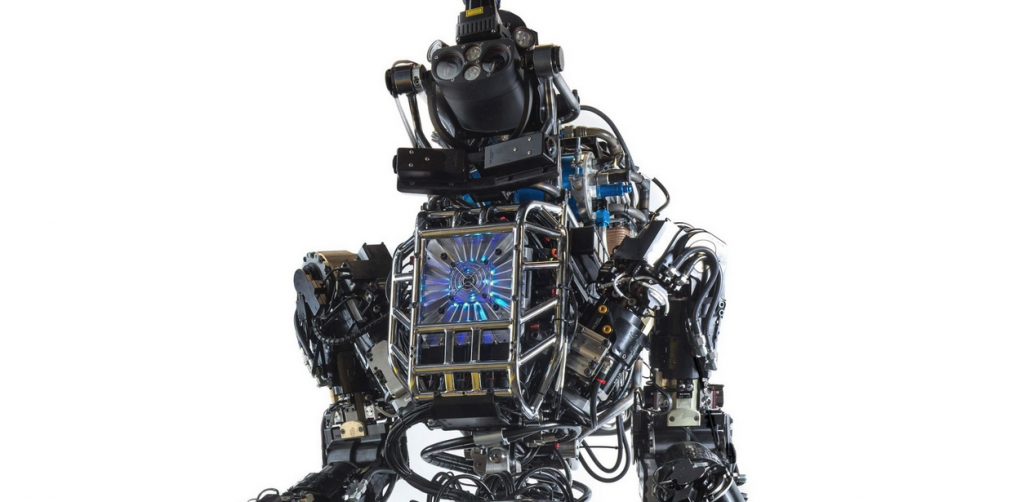We are approaching an age where robots will transform virtually every part of our society. Over the next decade or two the robotics industry will flourish as man looks towards technology for help in doing the things which are either too tedious, too expensive, or too dangerous for our biological bodies to handle.
One company leading the way in this area is the recently acquired Google subsidiary, Boston Dynamics. Acquired in late 2013, Boston Dynamics at the time was known for their biologically-inspired robots, including the Cheetah,
This month at the FAB 11 conference at MIT, Boston Dynamics founder, Marc Raibert, was on hand to show off a new and improved version of a humanoid robot they call Atlas. Atlas is a massive 1.88 meter, 156 kg (about 6’2″, 344 lbs) beast of a robot, which currently can navigate simulated terrain within a lab, and more recently, as Raibert showed in videos, can navigate actual outdoor terrain, such as wooded environments, as long as it’s tethered to a power supply.
[Image: Gizmodo]
Most notably, these additional upgrades include new legs to better mimic their human counterparts. Currently the legs of Atlas include dozens of parts, all attached to one another with even more nuts and bolts. Complicated hydraulics systems and heavy components not only add weight to the robot, making it less agile, but also slow it down considerably. That’s why Raibert and his team are working to streamline the legs using 3D printing to a large extent. The new legs, which they are working on, but have yet to thoroughly test out, utilize a lattice like structure with many of the important components, such as the hydraulics, printed right into the actual structure.
“I can’t show you the robot yet, but we’re pursuing this pretty aggressively, and I think by the end of the year, you’ll see robots from us that use an approach of fabrication that’s more like that,” Raibert excitedly explained.
The new 3D printed legs, which you can see pictured in a rendering to the right, could drastically improve the efficiency as well as performance of Atlas. Through the use of 3D printing the company is able to improve the routing of important artificial fluid throughout the limbs, improving their ability to cool, while advanced multi-material surfaces will add to the overall function and durability of Atlas.
It will be interesting to see just how much 3D printing eventually plays a part within the robotics industry moving forward. We imagine that it’s already playing a major role in the design of many of these sophisticated units, and should continue to find applications in the fabrication of components for these robots themselves.
Let us know your thoughts on Google’s use of 3D printing in future versions of Atlas. Discuss in the Google/Boston Dynamics 3D Printing forum thread on 3DPB.com, and be sure to check out the video of Atlas below:
